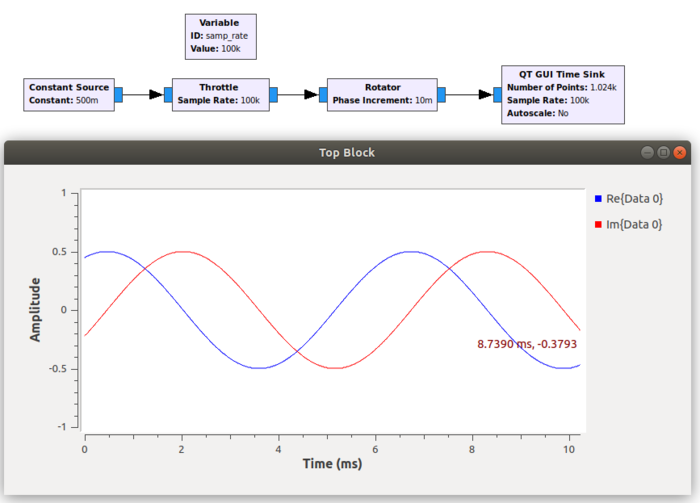Rotator: Difference between revisions
Jump to navigation
Jump to search
No edit summary |
No edit summary |
||
| Line 4: | Line 4: | ||
In the example below a constant source, set to 0.5, is fed into the rotator, thus producing a sine wave. The phase increment is set to 0.01 radians and the sample rate is 100kHz, so that equates to 1000 radians every second, or 1000/(2pi) = 159 cycles per second. This corresponds to a period of about 6ms, as shown in the time sink. | In the example below a constant source, set to 0.5, is fed into the rotator, thus producing a sine wave. The phase increment is set to 0.01 radians and the sample rate is 100kHz, so that equates to 1000 radians every second, or 1000/(2pi) = 159 cycles per second. This corresponds to a period of about 6ms, as shown in the time sink. | ||
Example Flowgraph | == Example Flowgraph == | ||
[[File:Rotator-ex.png|700px]] | [[File:Rotator-ex.png|700px]] | ||
Revision as of 03:14, 15 July 2019
Makes a complex rotator block. The phase increment (in radians) is how much phase will be added to the input every value.
In the example below a constant source, set to 0.5, is fed into the rotator, thus producing a sine wave. The phase increment is set to 0.01 radians and the sample rate is 100kHz, so that equates to 1000 radians every second, or 1000/(2pi) = 159 cycles per second. This corresponds to a period of about 6ms, as shown in the time sink.
